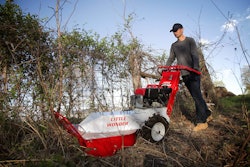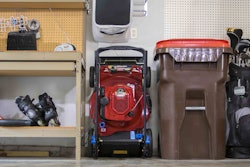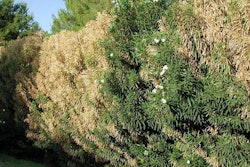 Landscapes need to be created with vision and patience to avoid common mistakes.
Landscapes need to be created with vision and patience to avoid common mistakes.Making a mistake is not something that’s found at the top of a person’s to-do list, but it’s something that happens to all of us. Learning from the experience can make you a better landscaper and can also help prepare you for the next client who comes your way.
Even though each job will be different and will bring with it its own set of challenges, here are six common landscaping design mistakes to keep in mind as you head into your next project.
Buying too big
While your clients may be tempted to want bigger plants right off the bat, it is well worth the wait to instead choose smaller plants. In an effort to make a landscape look more mature, many will want to purchase larger plants for a much higher price.
Advise your clients to stick with the cheaper options and let those little plants grow to their full potential in time. Do your research and be sure that you know how the plants they want will spread, reproduce and the maintenance they will require before taking on a job, and have that information ready for your client.
Not leaving room to breathe
Be sure that your clients understand that even though they may buy smaller plants, the plants will grow in time. With this in mind, remember to leave enough space between plants to ensure they have enough room to spread and bloom fully.
Even if the idea of leaving bare spots makes your clients worry, reassure them that it’s not the end of the world. An overcrowded garden will eventually force you to have to remove some, and if your clients have spent a fortune on overstocking their yard, they will not be happy to have them taken out shortly down the road.
Forgetting the four seasons
 By selecting plants that look good in more than one season you can create yearlong interest.
By selecting plants that look good in more than one season you can create yearlong interest.Photo: Wonderlane/Flickr
Always consider the future when going into a project, whether your client has considered it or not. Have a few design options on hand to suggest to clients, and be sure to keep all four seasons in mind when creating these options.
Not planning for all of the seasons can be one of the biggest snafus when it comes to planting, so research plants that will last beyond the current season to make sure clients can get more bang for their buck with longer lasting plant investments. Consider plants that look good year-round, like evergreen shrubs, perennial grasses or trees with interesting bark.
Not planting a serene palette
When choosing a color palette, it’s better to find about three colors, plus white-flowering plants as an accent, and stick with those colors. Adding too many colors may be an attractive idea at first, but after a while that attraction will fade, and it can often look too chaotic.
Just because it looks good in the nursery doesn’t necessarily mean it belongs in your client’s yard. Take into consideration the type of landscape you’ll be working with, the amount of light and shade that’s around and what is going to work best for them.
Clashing hardscapes
Much like the plants that are picked out for a landscape, finding hardscapes that go together is also important. Your clients may have multiple ideas of what they want in their yards, but at the end of the day it all needs to look good and work well together.
Try to encourage clients to match certain elements in the yard, such as the deck color and the front path matching the roof or front door colors. Try to limit the amount of materials you use when it comes to brick and stone patterns, and remember that quieter is better. Allow the plants to be the focal point of the landscape.
Not working with what your clients have
Whether your client has a rocky yard, a sunny yard or shady yard, it’s important not to try to force an idea or concept on something that just isn’t there. True, there are ways to get the idea your client wants, such as building retaining walls to fight erosion. But instead of fighting the terrain, sometimes it’s better to go with what’s in front of you and use it to its full potential. The key is to know what you’ll be working with and what options you have for that particular landscape.










